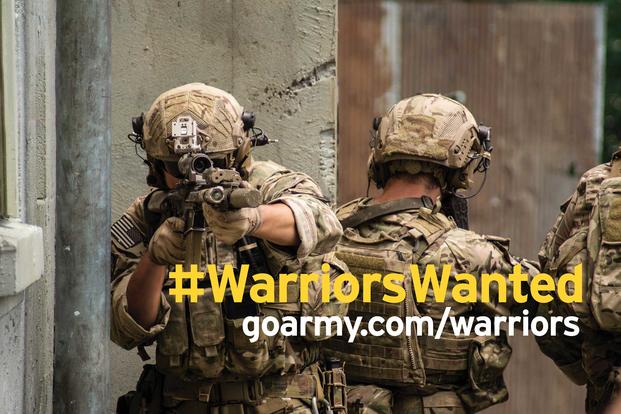Alongside the rest of the U.S. military, the Army is growing. President Donald Trump made a larger military one of his main defense positions while campaigning, and now the pressure is on for recruiters to meet their quotas. That translates to huge bonuses and aggressive recruitment methods.
The new approach follows in the wake of an unsatisfactory 2018. In Fiscal Year 2018, the Army fell short of its recruitment goals, attracting 69,972 new soldiers out its 76,500 goal (91.47 percent). The goal for Fiscal Year 2019 is an active duty force of 478,000.
Some of the more lucrative jobs in the Army are artillery, intelligence, and logistics, which have a $15,000 enlistment bonus. The intel field has additional re-enlistment bonuses that range from $17,600 to $72,000, depending on unit and rank, but these jobs and numbers fluctuate depending on Army needs.
“The Army continues to review the enlistment bonus program monthly and adjust when needed to enlist quality recruits for critical skill military occupational specialties,” said Lt. Col. Emanuel Ortiz-Cruz, an Army spokesman, in an interview with Army Times. “Reenlistment bonuses are reviewed quarterly to support projected critical MOS and skill gaps and shortfalls. Both of these bonus programs are crucial to ensuring we can man Army units.”
When the new recruitment initiative began last fall, Alison Bettencourt, the chief public affairs spokesperson for the Army Marketing and Research Group, said in an interview with military.com: “Whereas past campaigns focused on a little bit about why we do what we do, this one is really focusing in on a very modern, ready and lethal force. Our initial launch was through social media, and then last night we actually had it hit broad-reach, so it aired several times on different network channels. There will be several commercials that will come out under this campaign.”
There are, however, some quality standards (also known as “quality benchmarks”) that recruiters must ensure candidates meet. The major ones are possession of a high school diploma and the percentage above average on the Armed Forces Qualification Test (AFQT). The current requirements established by the Department of Defense stipulate that “at least 90% of NPS (Non-Prior Service) enlistees must be high school graduates, and at least 60% must score above average on the AFQT.”
Previously, Army Chief of Staff Mark Milley, who is slated to become the new Chairman of the Joint Chiefs of Staff, told the Army Times: “Optimal strength, I would define as in excess of 90%. So, if you are going to a major training event, a collective training event, ideally you want at least 90% of your assigned strength to go to that event. So, we are not there yet, because we still have gaps and holes in many of our operations units, but there are fewer gaps and holes than there were 36 months ago.”
The Army has used Special Operations units as one of the main prongs of the recruitment campaign. The rationale is that candidates who sign-up with Option 40 or 18 Xray (meaning, they get the chance to try out for the 75th Ranger Regiment or the Special Forces, respectively) but don’t make the cut, would be good enough for other Army units. In a separate but enhancing effort, the 75th Ranger Regiment has been offering a bonus of $10,000 to new enlistees and almost $50,000 to Rangers who reenlist.
https://www.youtube.com/watch?v=NhwMT768T64
Already have an account? Sign In
Two ways to continue to read this article.
Subscribe
$1.99
every 4 weeks
- Unlimited access to all articles
- Support independent journalism
- Ad-free reading experience
Subscribe Now
Recurring Monthly. Cancel Anytime.









